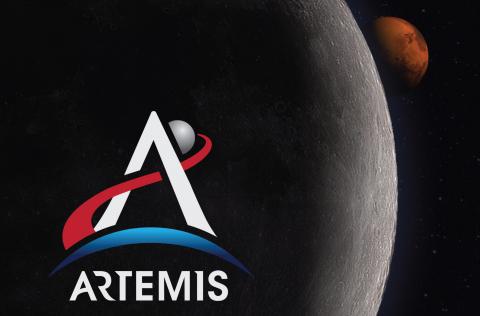
We are going to the Moon with a promise this will lead to Mars. I bet that NASA was concerned that the idea would be a hard sell to the public without the showy proclamations, especially since there wasn’t too much competition from our rivals. We do hitch rides from Russia, after all. “While maintaining American leadership in exploration, we will build a global alliance and explore deep space for the benefit of all.” 1 Yes, NASA speaks of its mission to all of humanity. I distrust messages that seem too grandiose and noble. Anyway, this mission is called the Artemis Campaign. My father would be so proud that we are finally returning to the Moon and then on to Mars. There is competition with private companies to supply the components, just where competition should be. That is the only way this endeavor will progress.
The Artemis Campaign consists of four steps:
Artemis I
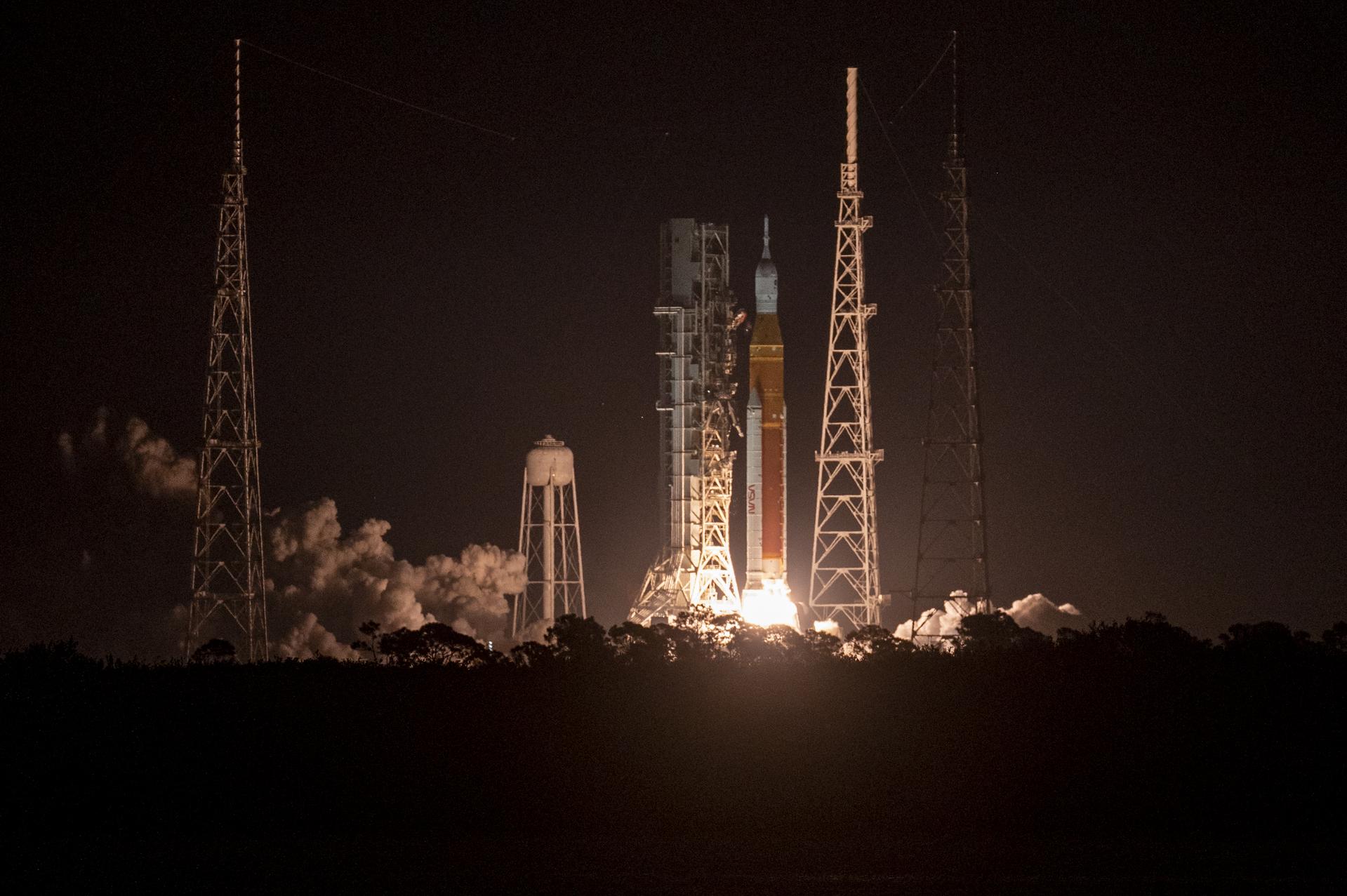
An un-crewed flight test of the Space Launch System and the Orion spacecraft around the Moon. This step occurred one year ago. It lasted 25 days, 10 hours, and 53 minutes. It launched on November 16, 2022, and splashed down on December 11, 2022.
The first step was an un-crewed flight test of the Space Launch System and the Orion spacecraft, which was to orbit around the Moon. This step occurred one year ago, on November 16, 2022, and splashed down on December 11, 2022. The flight test lasted 25 days, 10 hours, and 53 minutes.
Next, it was time to practice moonwalks, so NASA Astronauts went to Arizona—right in my backyard.
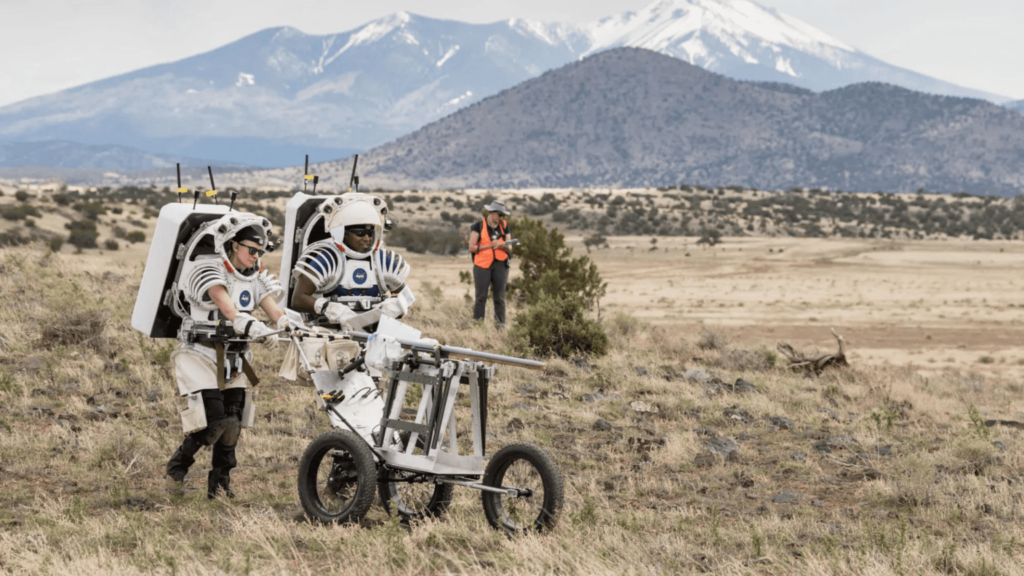
Illustration 3 NASA astronauts Kate Rubins and Andre Douglas push a tool cart loaded with lunar tools through the San Francisco Volcanic Field north of Flagstaff, Arizona, as they practice moonwalking operations for Artemis
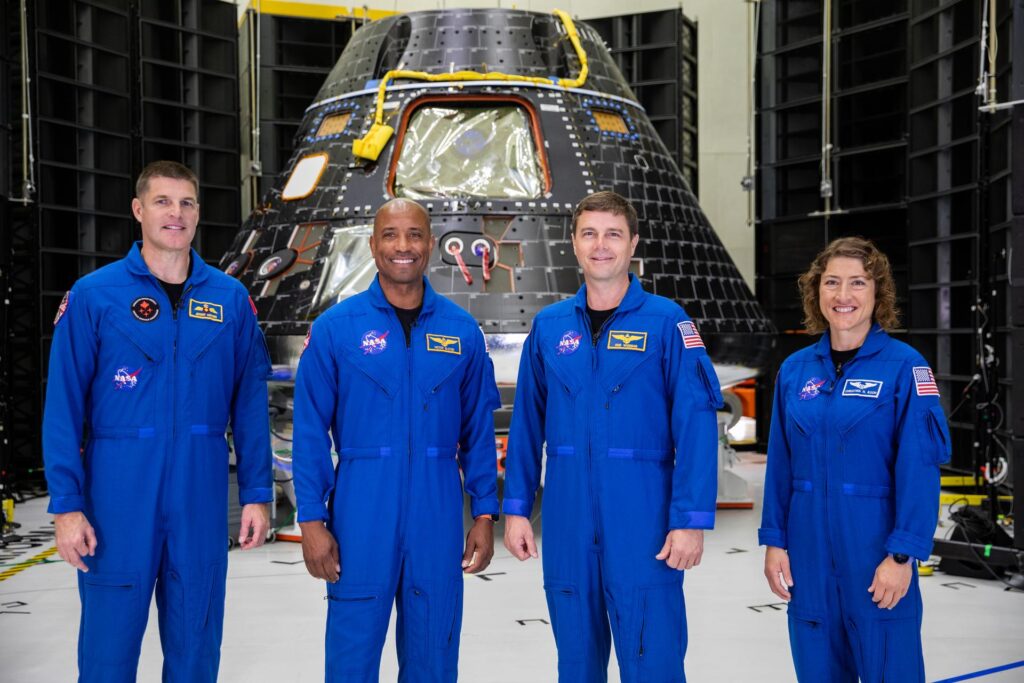
Artemis II
Artemis II will be a flight test of the Space Launch System and the Orion spacecraft around the Moon, the first mission with humans aboard. They are due to launch in September 2025, and the trip will last ten days.
Artemis III
This mission will send the first humans to explore the region near the lunar South Pole. It will launch around September 2026 and last approximately thirty days. The astronauts will ride in the Orion 004 and the Starship HLS lander.
Starship HLS (Human Landing System) is the means astronauts will use to get from the Lunar Gateway space station to the Moon and then return to the Gateway station. As of 2024, NASA intends to use Starship HLS for Artemis III, an enhanced Starship HLS for Artemis IV, and a Blue Origin HLS for Artemis V.
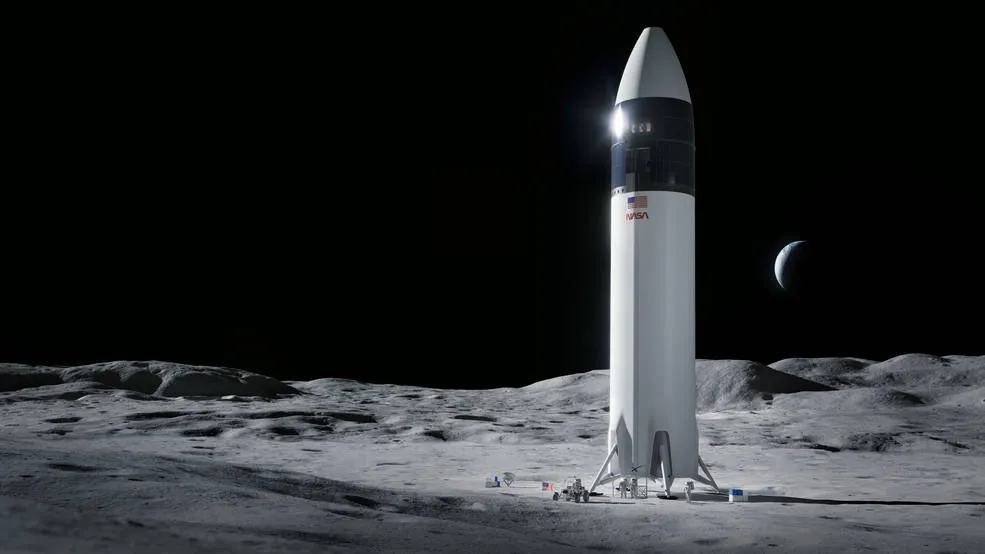
The Gateway space station will be a communication hub, science laboratory, and habitation module for astronauts.
Artemis IV
The mission will include the fourth use of a Space Launch System (SLS) launch vehicle. Four astronauts will be on board the Orion spacecraft, which will travel to the Lunar Gateway space station, install a new module on the Gateway, and make a second lunar landing.
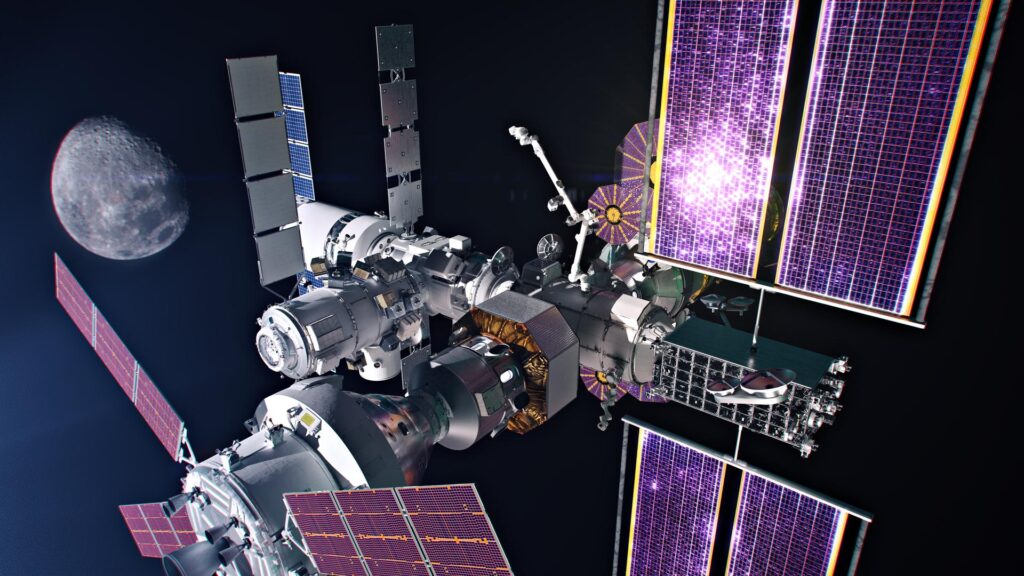
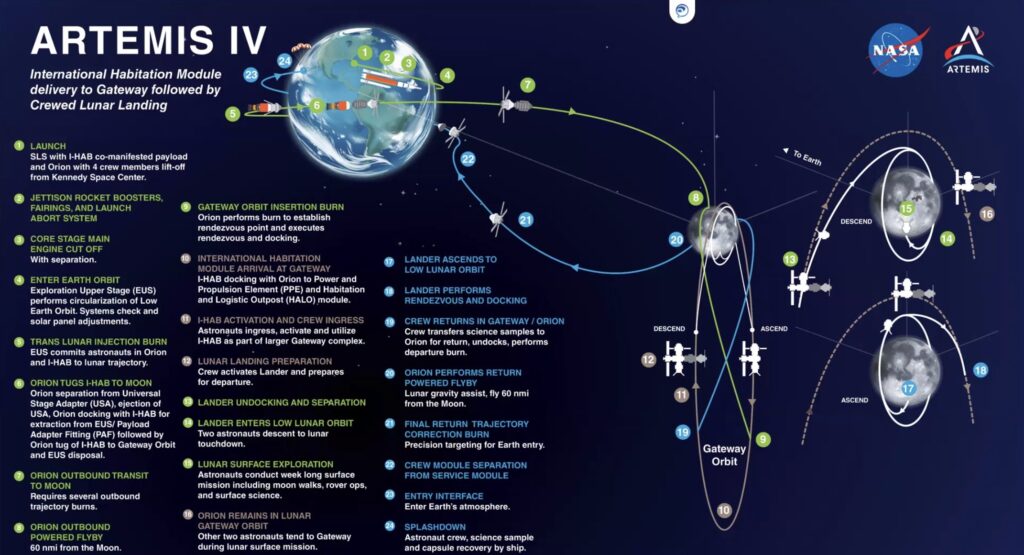
As of March 2023, Artemis IV will launch no earlier than September 2028.
These structures and procedures have yet to be decided upon or built, and many challenges have yet to be solved. The radiation problem could be a deal breaker if no one can come up with an answer for that issue.
In the meantime, here is the idea for the habitation on the Moon.
As of March 2023, Artemis IV is scheduled to launch no earlier than September 2028.
These structures and procedures have yet to be decided upon or built, and many challenges have yet to be worked out. The radiation problem could be a deal breaker if no one can come up with an answer.
In the meantime, here is what is planned for the habitation on the moon.
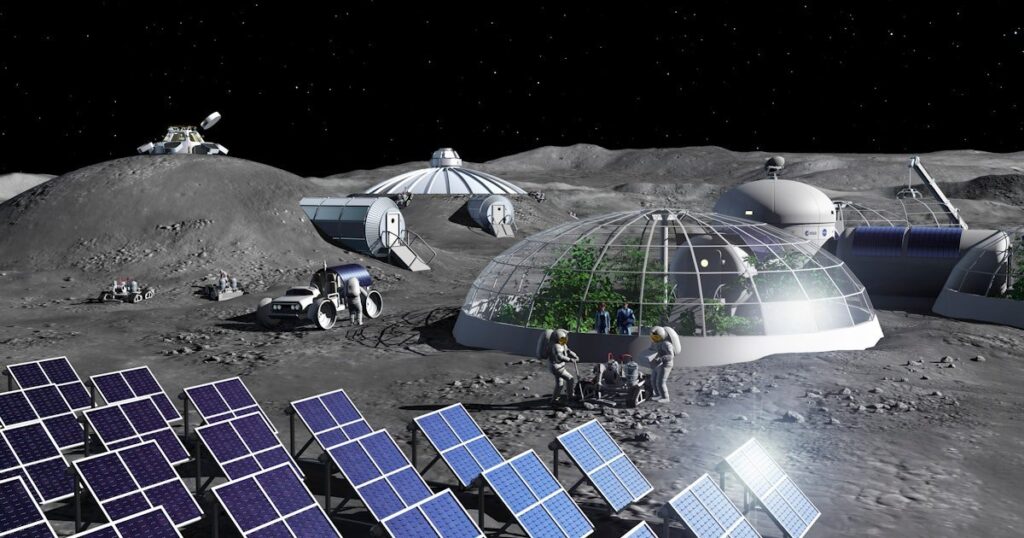
As an added note, “Leaders at the inaugural U.S.-Germany Space Dialogue (held in Berlin, Germany, on June 3-4, 2024) highlighted a shared commitment to continue cooperation in space exploration and research, including through NASA’s Artemis campaign.
Germany has played a critical role in developing the propulsion modules for Artemis’ Orion crew spacecraft. According to a memo from the State Department, these modules will carry astronauts from lunar orbit to the surface of the Moon.” 6
So far, so good!
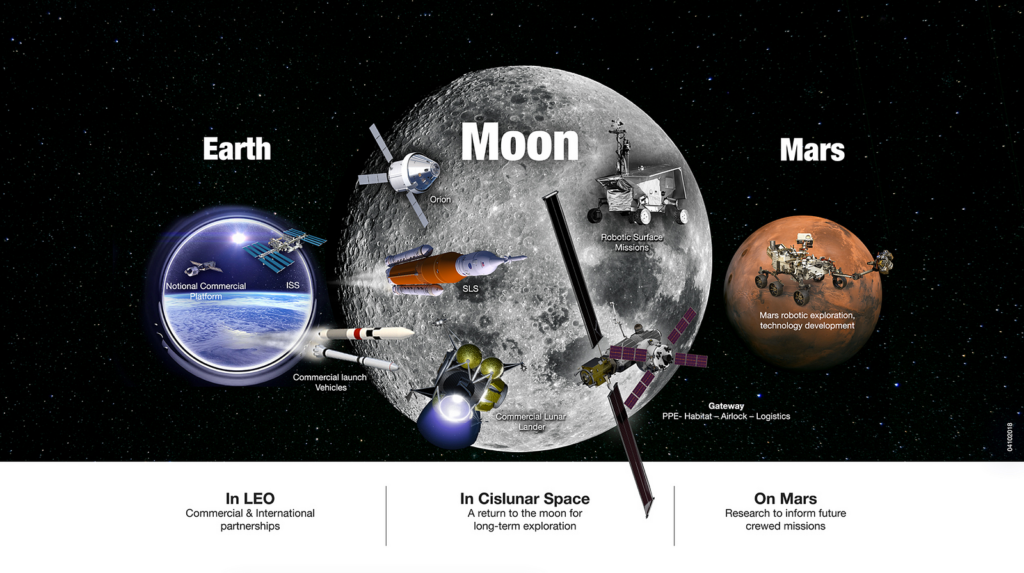
©JM Strasser 2024 All Rights Reserved
Sources
1. https://www.nasa.gov/humans-in-space/artemis/
2. https://en.wikipedia.org/wiki/Artemis_1
3. https://en.wikipedia.org/wiki/Artemis_2
4. https://en.wikipedia.org/wiki/Artemis_3
5. https://en.wikipedia.org/wiki/Artemis_4
Illustrations
2. https://www.nasa.gov/mission/artemis-i/
6. https://scitechdaily.com/nasas-artemis-iv-building-gateway-humanitys-first-lunar-space-station/
7. https://en.wikipedia.org/wiki/Artemis_4#/media/File:Artemis_IV_Mission_profile_as_of_April_2022.jpg
8. https://scitechdaily.com/images/Artist-Impression-Moon-Base-scaled.jpg
9. https://cdn-images-1.medium.com/v2/resize:fit:1600/1*P14Z45fyHAtqvQPaZehMgQ.png